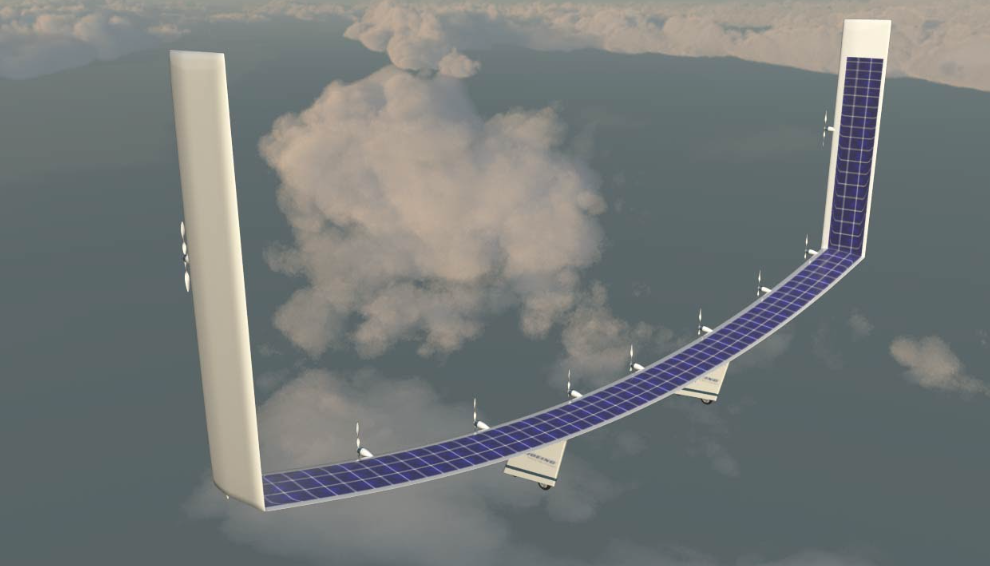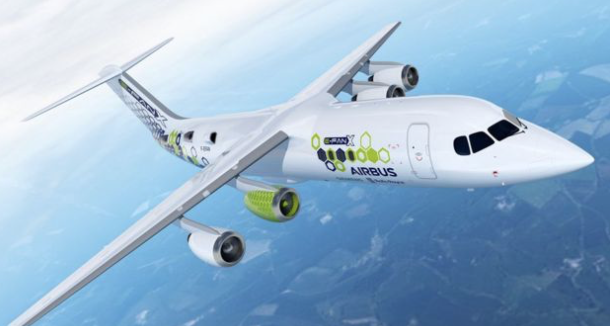Is it OK to dream of electric planes, when the future of our planet depends upon zero carbon?
Boeing’s solar powered plane that can fly forever
Virtue signalling alert: since Greta Thunberg’s address to Davos, we’ve said no to one long-haul and three European flights. The necessity of avoiding all but unavoidable flying has landed with us. But that hasn’t made much impact upon the desire to go travelling: the yearning to be in different landscapes amongst unfamiliar people persists.
Bertrand Piccard on Solar Impulse 2’s round the world flight
So can we be even a little bit excited about the growing promise of green flying? Strictly speaking that means solar powered engines. In 2016 Solar Impulse 2 made the first ever round the world flight powered by the sun alone. But it was only one man, Bertrand Piccard, taking a risk. In 2018 Airbus flew an unmanned plane for 26 hours straight. We’re still far from mass Sun travel.
But in the short term, could it also mean electric airplanes? No doubt all the same arguments against going for electric cars hold true for battery powered aviation. Or do they? As Colin Herron of Zero Carbon Futures suggests, the idea that the impact of producing electricity is just as bad for the environment as fossil fuels themselves, is badly out of date. “In 2012, coal was generating over 40% of the UK’s power output, however in the first half of 2017, the figure had reduced to just 2%.” In June this year the National Grid reported that Britain is now generating more fuel from zero-carbon sources than fossil fuels.
So, with caution, let’s welcome this BBC report on the launch of Alice, the first commercial, all electric, nine-seater aircraft:
Israeli firm Eviation says the craft - called Alice - will carry nine passengers for up to 650 miles (1,040km) at 10,000ft (3,000m) at 276mph (440km/h). It is expected to enter service in 2022.
Alice is an unconventional-looking craft: powered by three rear-facing pusher-propellers, one in the tail and two counter-rotating props at the wingtips to counter the effects of drag. It also has a flat lower fuselage to aid lift.
"This plane looks like this not because we wanted to build a cool plane, but because it is electric," says Eviation's chief executive Omer Bar-Yohay.
"You build a craft around your propulsion system. Electric means we can have lightweight motors; it allows us to open up the design space."
Alice, a 9 seater electric plan launched at the Paris air show this week.
Eviation has already received its first orders. US regional airline Cape Air, which operates a fleet of 90 aircraft, has agreed to buy a "double-digit" number of the aircraft.
The firm is using Siemens and magniX to provide the electric motors, and magniX chief executive Roei Ganzarski says that with two billion air tickets sold each year for flights of under 500 miles, the business potential for small electric passenger aircraft is clear.
Crucially, electricity is much cheaper than conventional fuel.
A small aircraft, like a turbo-prop Cessna Caravan, will use $400 on conventional fuel for a 100-mile flight, says Mr Ganzarski. But with electricity "it'll be between $8-$12, which means much lower costs per flight-hour".
The future also looks reasonably bright when it comes to medium-range flight - a range of up to about 1,500km.
Unlike Alice, aircraft targeting this range would use a mix of conventional and electric power, enabling them to cut CO2 emissions significantly by switching on the electrical component of their propulsion at the key points in a flight - take-off and landing.
Zunum Aero, backed by Boeing, is using a engine turbine from France's Safran to power an electric motor for a hybrid craft. And low-cost airline EasyJet is working with Wright Electric, saying it will start using electric aircraft in its regular services by 2027. This is likely to be on short-haul flights, such as London to Amsterdam - Europe's second busiest route.
"Electric flying is becoming a reality and we can now foresee a future that is not exclusively dependent on jet fuel," says EasyJet chief executive Johan Lundgren.
It's a statement underscored by a report from investment bank UBS which predicts the aviation sector will quickly switch to hybrid and electric aircraft for regional travel, with an eventual demand for 550 hybrid airliners each year between 2028 and 2040.
But the prospects for electric long-haul flights are not so rosy.
While electrical motors, generators, power distribution and controls have advanced very rapidly, battery technology hasn't.
Even assuming huge advances in battery technology, with batteries that are 30 times more efficient and "energy-dense" than they are today, it would only be possible to fly an A320 airliner for a fifth of its range with just half of its payload, says Airbus's chief technology officer Grazia Vittadini.
The big problem with this is that 80% of the aviation industry's emissions come from passenger flights longer than 1,500km - a distance no electric airliner could yet fly.
Yet the UK has become the first G7 country to accept the goal of net zero carbon emissions by 2050 - a huge challenge for the air travel business with 4.3 billion of us flying this year and eight billion expected to do so by 2037.
Airbus, Rolls-Royce and Siemens are co-operating on an electric-hybrid aeroplane called the E-Fan




